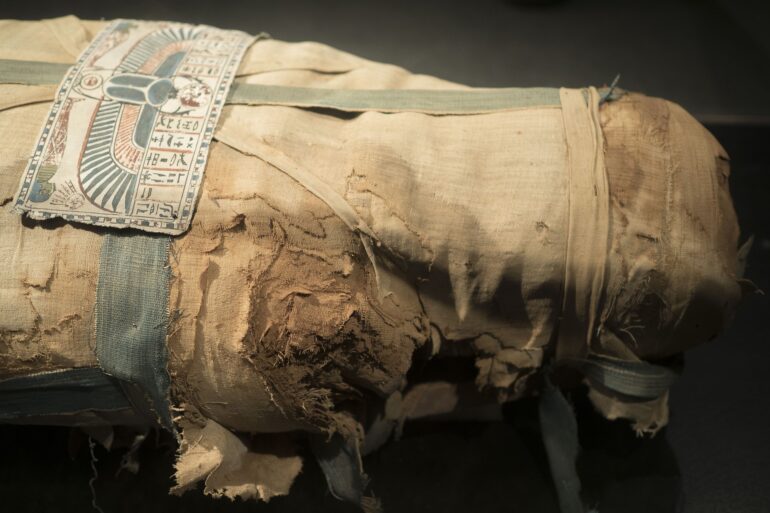TL;DR:
- Egypt’s Ministry of Tourism and Antiquities collaborates with the Atomic Energy Authority to launch a pioneering workshop.
- The workshop aims to utilize nuclear, radiological, and artificial intelligence techniques for restoring and documenting ancient mummies and human remains.
- Experts and specialists from the ministry, authority, and Cairo University participate in the event.
- Cutting-edge technologies at the Atomic Energy Authority’s laboratories enable non-invasive analysis and preservation of human remains.
- The use of AI in mummy restoration aligns with the latest scientific developments, safeguarding Egypt’s cultural heritage.
- AI technology is employed for the first time in Egypt for mummy restoration, going beyond facial reconstruction to encompass restoration work.
- Training sessions focus on AI utilization in the restoration field and evaluating restoration processes using specialized software.
Main AI News:
In a groundbreaking initiative, Egypt’s Ministry of Tourism and Antiquities, in collaboration with the Atomic Energy Authority, is gearing up to unveil a pioneering workshop dedicated to leveraging nuclear, radiological, and artificial intelligence (AI) techniques for the restoration and documentation of ancient mummies and human remains. This remarkable undertaking is organized by the esteemed Department of Restoration of Mummies and Human Remains.
Scheduled to span three days, the workshop will convene a cohort of distinguished experts and specialists hailing from the authority, the ministry, and the prestigious Faculty of Archeology at Cairo University. Among the participants, the Central Department for Maintenance and Restoration, led by Manal Abdel-Moneim, stands at the forefront. Manal Abdel-Moneim emphasized that the Atomic Energy Authority’s state-of-the-art laboratories house cutting-edge technologies, enabling the examination, preservation, and analysis of human remains without causing any harm. The pivotal role played by the Atomic Energy Authority’s Artificial Intelligence Division will complement the restorers’ efforts significantly. Throughout the event, the technologies employed will be elaborated upon thoroughly by eminent scientists from the authority.
Underlining the significance of integrating AI technology in this domain, Rania Ahmed, Director of the Mummies Restoration Department, asserted that it aligns with the latest scientific advancements and presents a non-invasive approach to scrutinizing these cherished artifacts, thereby safeguarding Egypt’s rich heritage. Importantly, this endeavor marks the first-ever implementation of AI technology on mummies and human remains within Egypt, transcending conventional practices of creating videos or reconstructing facial features to encompass the domain of restoration work.
Rania Ahmed expounded that comprehensive training sessions will be conducted to familiarize the restoration workers with the use of AI in their field. The programs employed will facilitate the restorers in evaluating the restoration process even before commencing the actual work. Specialized software installed on laptops or iPads will enable restoration workers to capture images of the available skeletal remains, which can then be further analyzed and processed using the program.
Conclusion:
Egypt’s pioneering initiative to incorporate AI in mummy restoration signifies a significant leap in heritage preservation. By leveraging advanced technologies and scientific methods, the restoration process becomes more accurate, non-invasive, and efficient. This development is likely to enhance Egypt’s position in the cultural heritage market, attracting global interest and potential partnerships with other countries seeking innovative solutions for the preservation and restoration of historical artifacts.

